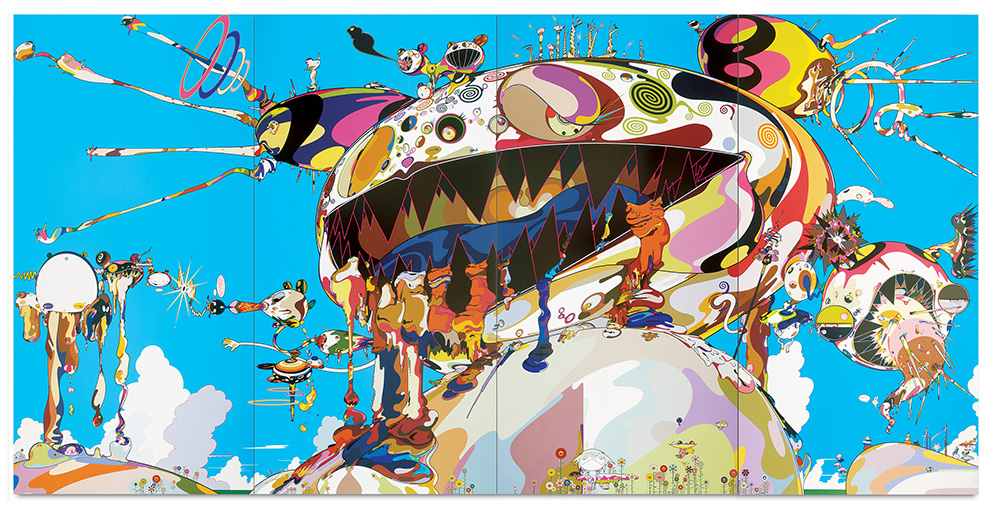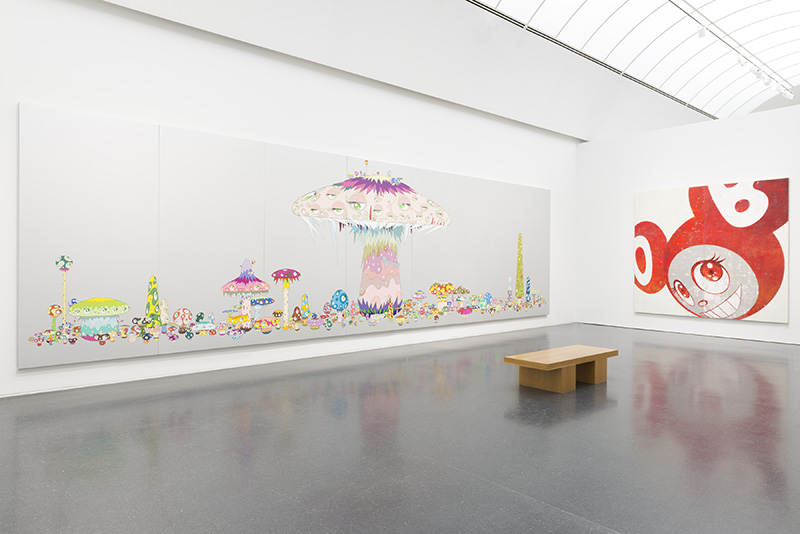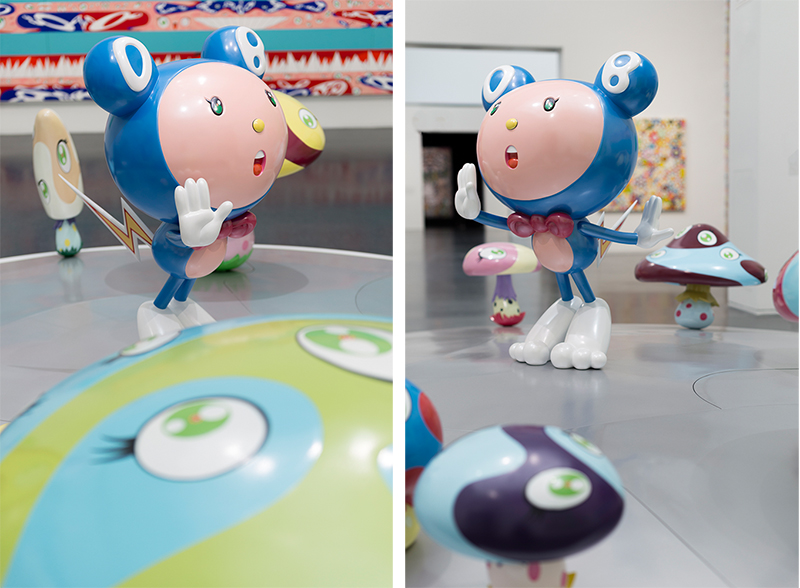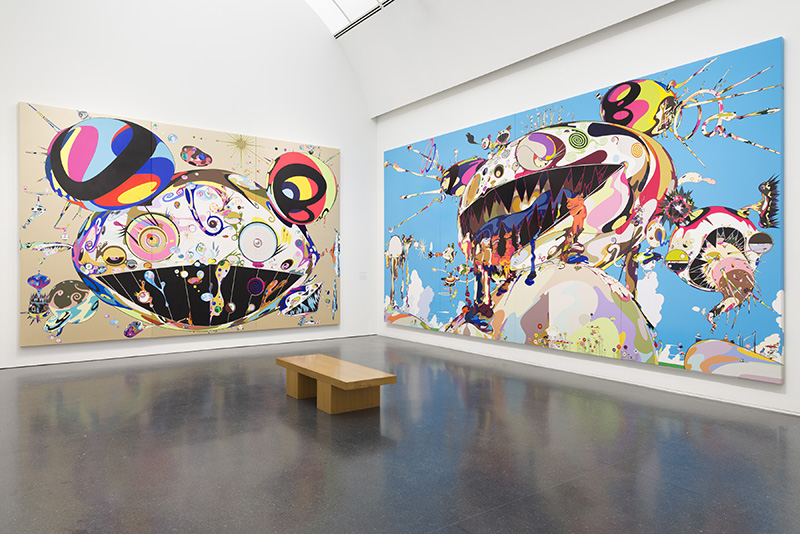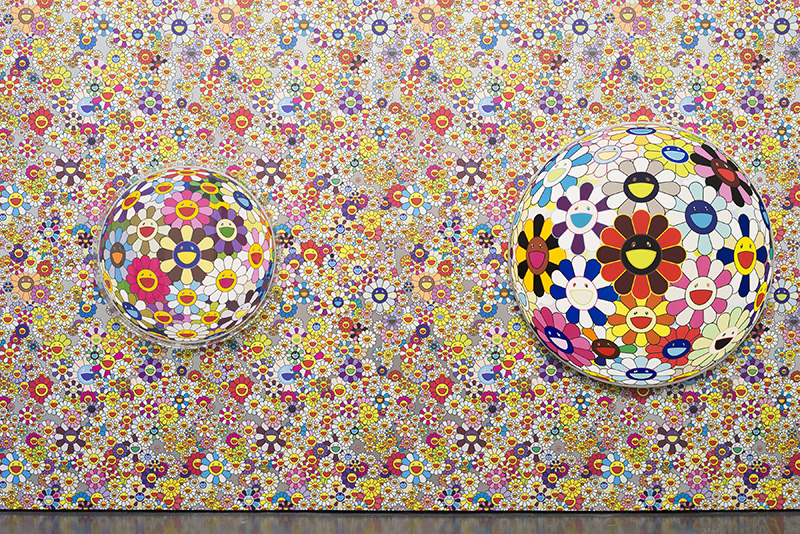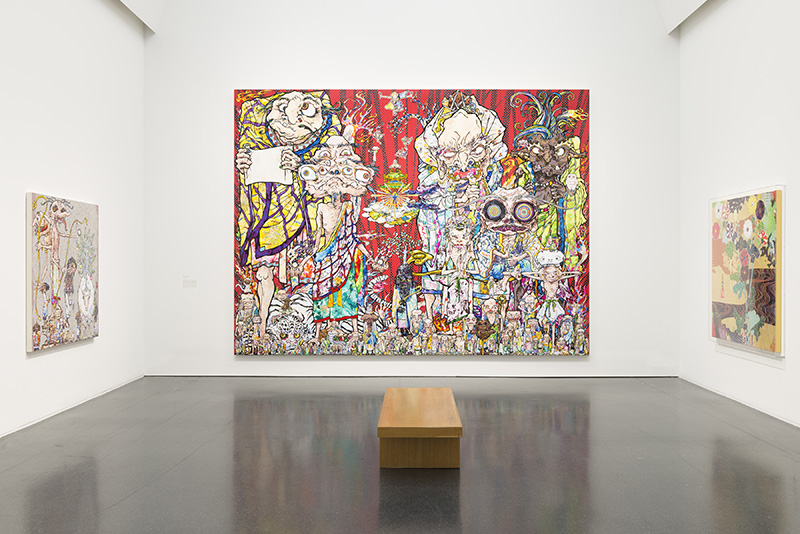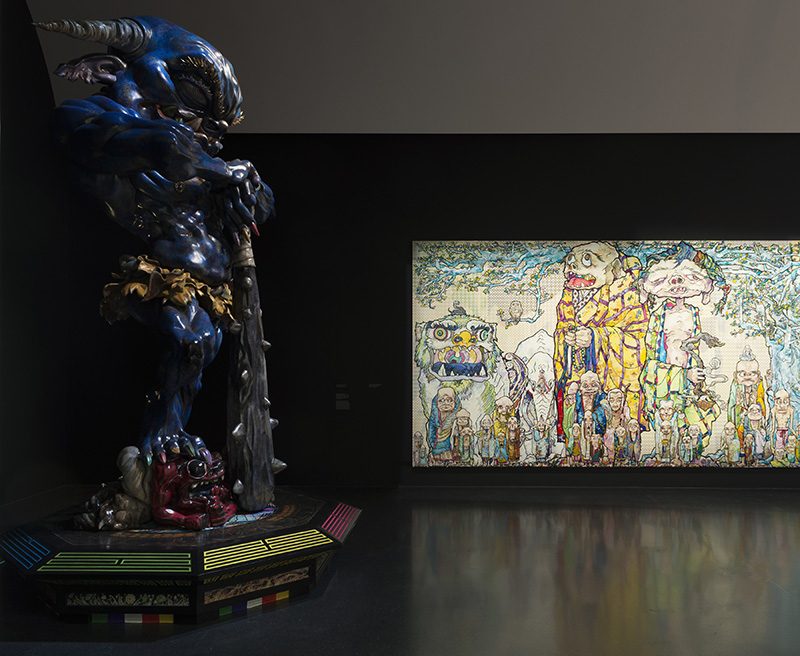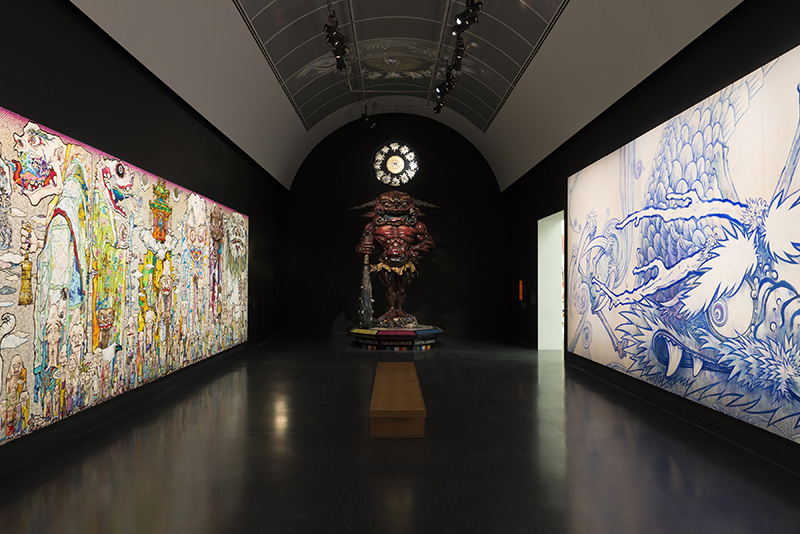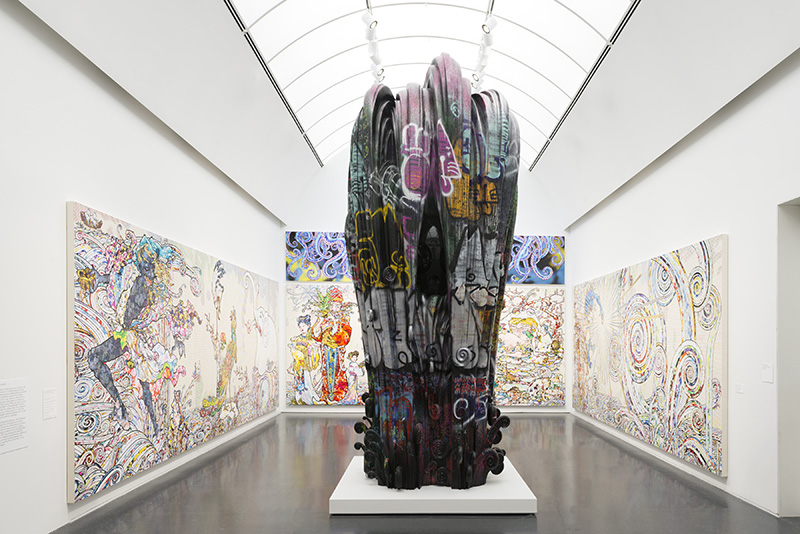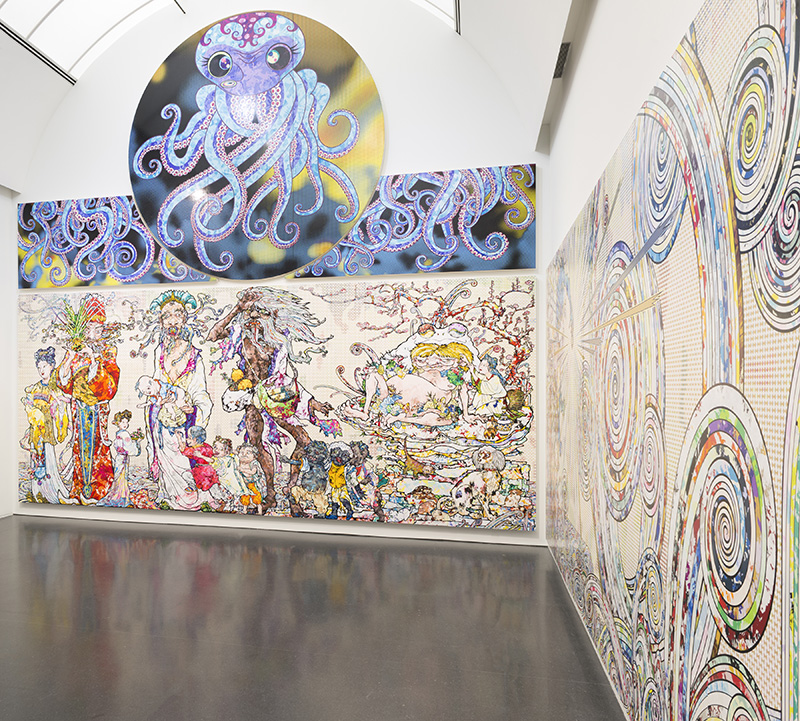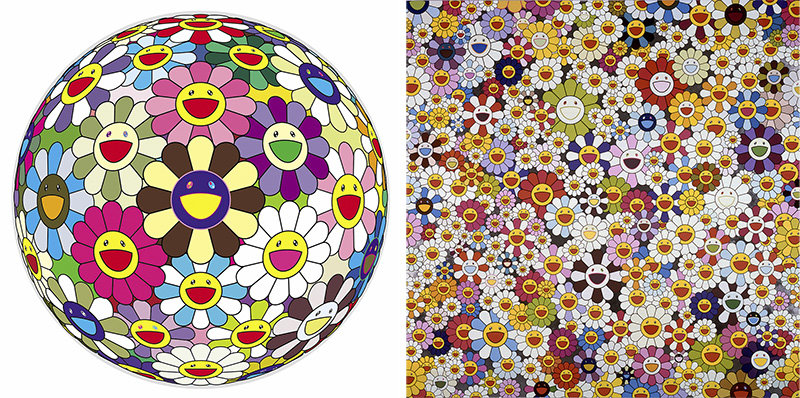ART-PRESENTATION: Takashi Murakami-The Octopus Eats Its Own Leg,Part II
 Working in the red thin line between different cultures, Takashi Murakami has stated that the artist is someone who understands the borders between worlds and who makes an effort to know them. With his distinctive “Superflat” style and ethos, which employs highly refined classical Japanese painting techniques to depict a super-charged mix of Pop, animé and otaku content within a flattened representational picture-plane, he moves freely within an ever-expanding field of aesthetic issues and cultural inspirations, (Part I)
Working in the red thin line between different cultures, Takashi Murakami has stated that the artist is someone who understands the borders between worlds and who makes an effort to know them. With his distinctive “Superflat” style and ethos, which employs highly refined classical Japanese painting techniques to depict a super-charged mix of Pop, animé and otaku content within a flattened representational picture-plane, he moves freely within an ever-expanding field of aesthetic issues and cultural inspirations, (Part I)
By Dimitris Lempesis
Photo: Museum of Contemporary Art Chicago Archive
Takashi Murakami’s exhibition “The Octopus Eats Its Own Leg” at Museum of Contemporary Art-Chicago (MCA), features fifty works that span three decades of his career, from the artist’s earliest mature works, many of which are being shown in North America for the first time, to his recent, monumentally scaled paintings. The exhibition shows how Murakami’s art is rooted in traditions of Japanese painting and folklore, and highlights the artist’s careful attention to craft and materials. It also showcases the artist’s astute eye for the contemporary influences of globalization, media culture, the continued threats of nuclear power. “Tan Tan Bo Puking – a.k.a. Gero Tan” (2002) is a perfect materialization of Murakami’s famous “Superflat” concept laced with influences of Japanese anime and monster films. Murakami says his fascination with anime started early on. “I am part of the first generation to watch ‘Star Wars’ real time, so I’ve naturally been influenced by the series. As such, I believe the influence has seeped into my self-expression”. Among the rexhibition’s strengths is its inclusion of seldom-seen canvases from Murakami’s early career. By arranging Murakami’s oeuvre in a loosely chronological order, the exhibition traces the development of Murakami’s preoccupations over his decades-long career. Despite their differences, the woks presented here might be interpreted as documenting Murakami’s relationship with Japan, from early anxieties over nuclear energy to an embrace of otaku and kawaii pop culture to a return to Asian art history. Murakami’s increasingly complex paintings are filled with characters and scenarios both cute and menacing, saccharine sweet and critically acidic. They are evidence of a conflicted, concerned, and committed commentator on cultural production who recognizes that any effective “hook” is bound to have a sharp point. Throughout his career, and especially over the last ten years, Murakami has combined spectacle with sophistication, transforming the art world while establishing his own reputation within it.
Info: Curatορ Michael Darling, Museum of Contemporary Art Chicago, 220 East Chicago Avenue, Chicago, Duration: 6/6-24/9/17, Days & Hours: Tue & Fri 10:00-19:00, Wed-Thu & Sat-Sun 10:00-17:00, https://mcachicago.org
